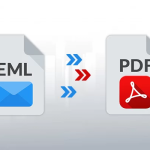In the rapidly evolving digital landscape, establishing and enhancing an e-commerce presence is crucial for businesses of all sizes. Whether you are looking to launch a new online store or improve your existing e-commerce platform, navigating the complexities of development is essential. This comprehensive guide outlines key steps, essential facts, and valuable tips to ensure the success of your e-commerce venture.
I. Introduction to E-commerce Development
The global surge in online shopping, intensified by the challenges posed by the recent pandemic, has compelled entrepreneurs to shift their focus to the digital realm. To thrive in this competitive landscape, businesses must prioritize factors such as product availability, professional service, express delivery, and a diverse range of offerings. This section delves into the importance of building an e-commerce store that aligns with your business goals.
II. Outsourcing for E-commerce Success
Navigating the intricate web of e-commerce development can be challenging, especially for tasks such as domain connection, API updates, social media integration, and delivery options setup. Discover how outsourcing specific tasks related to your e-commerce business can streamline the development process and meet your unique requirements. Our platform offers comprehensive assistance, allowing you to tailor your approach based on your project’s needs and budget.
III. Choosing the Right E-commerce Platform
A crucial decision in e-commerce development is selecting the appropriate platform. Explore the pros and cons of prominent platforms like WooCommerce, Magento, and Shopify to make an informed choice. Understand the features, performance, and suitability of each platform to ensure it aligns with your business objectives.
1. WooCommerce: Tailored for Beginners
Explore why WooCommerce, with its affordability and user-friendly interface, is a preferred choice for beginners. Dive into its compatibility with WordPress, extensive plugin options, and suitability for those starting their e-commerce journey.
2. Magento: Robust and Professional
Delve into the dynamics of Magento, a powerful yet pricier solution known for its high security and performance. Learn why it’s favored by large global enterprises and how it stands out in terms of stability and extensions.
3. Shopify: Simplicity for Multichannel Selling
Uncover the ease of use provided by Shopify, a hosted platform facilitating multichannel selling on various platforms. Understand its drag-and-drop functionality, user-friendly theme customization, and seamless integration with social media channels.
IV. E-commerce Software Functionalities
Once you’ve chosen an e-commerce platform, it’s crucial to understand and leverage its functionalities effectively. This section explores the various features that can be customized, integrated, and enhanced to maximize the benefits of your e-commerce software.
1. Building a Business Strategy
Establish the importance of developing a comprehensive business strategy for your e-commerce venture. Understand how a well-placed platform enables order tracking, easy payments, promotional messages, and efficient delivery management, forming the foundation for a successful customer experience.
2. Website Readability and Responsiveness
Examine the significance of a readable, intuitive, and responsive website, supported by insights from e-commerce customer studies. Learn how a high-performing search setup enhances sales and why seeking assistance from a UX designer is crucial for optimal product page design.
3. Project Scope and Flexibility
Explore examples of project scopes for e-commerce development and understand how flexibility in task assignments can benefit your project. Discover the significance of setting the basic half of an expert’s duties initially and supplementing them as needed.
V. Marketing Strategies for E-commerce Success
Effectively marketing your e-commerce store is vital in a competitive landscape. This section provides insights into crafting successful marketing campaigns, integrating web strategies, and maximizing the impact of your online presence.
1. Marketing Campaigns
Learn about the significance of marketing campaigns in the e-commerce realm. Understand how campaigns, coupled with web integrations, can elevate your online store’s visibility and drive customer engagement.
2. Web Integrations and Development Options
Delve into the importance of controlled development and efficient work processes. Explore options such as storefront integration, product uploads, page speed improvement, and customer service integration to enhance your e-commerce platform.
3. Customer Base Management
Understand the value of an organized customer base through CRM systems. Explore the benefits of loyalty clubs, gift card setups, and subscription processes in retaining customers and fostering long-term relationships.
4. Sales Basket Management
Uncover the significance of streamlining the management of the sales basket for enhanced customer experience. Learn about automation measures and the importance of saving customer data and product lists seamlessly.
5. Filtering and Checkout Optimization
Explore the necessity of filtering options for customers and optimizing the checkout process. Understand how providing multiple payment methods and delivery options caters to diverse customer preferences.
6. Custom Theme Design
Recognize the impact of a well-designed and intuitive website on customer perception. Learn why custom theme design matters, contributing to a positive first impression and increased customer interest.
VI. Meeting Customer Needs
Understanding and meeting customer needs is pivotal for e-commerce success. This section explores strategies for addressing the diverse requirements of private and professional clients, emphasizing the importance of customer-centric approaches.
1. Client Preferences in E-commerce
Explore the varying preferences of private and business clients in the e-commerce landscape. Understand how factors like easy contact, social media presence, and diverse payment methods influence customer decisions.
2. E-commerce Website Development Possibilities
Discover the extensive possibilities for e-commerce website development. Learn how enhancing the customer experience through visual elements, navigation refinement, and automated processes contributes to overall success.
3. Improving Customer Experience
Understand the role of visual reception in acquiring customers. Explore the importance of clear website navigation, shopping cart refinement, and streamlined payment processes in ensuring a positive customer experience.
VII. E-commerce Development Options
This section delves into various e-commerce development options, providing insights into improving the overall customer experience and ensuring the seamless operation of your online store.
1. Customer Interaction and Graphics
Explore the role of graphics in enhancing customer interaction. Learn how graphics can be utilized to improve the overall aesthetics of your website and contribute to a positive user experience.
2. Balance and Resource Management
Understand the importance of maintaining a balance and managing resources effectively. Explore how hourly plans and expert consultations can be utilized to make informed decisions regarding software choices and task implementation.
3. Customization and UX Design
Delve into the customization options available for your e-commerce platform. Learn about the significance of UX design consultations and how they contribute to the overall visual appeal and functionality of your website.
VIII. Marketing Strategies for E-commerce Growth
In a highly competitive landscape, effective marketing is paramount for sustained growth. This section focuses on advanced marketing strategies, integration of automation programs, and the role of discounts in the e-commerce industry.
1. Marketing Automation Programs
Explore the benefits of integrating marketing automation programs such as Klaviyo or ActiveCampaign. Understand how these programs enhance customer engagement, provide discounts, and contribute to long-term customer loyalty.
2. Discounts and Promotions
Understand the pivotal role of discounts in attracting and retaining customers. Explore how informed communication through email or SMS, coupled with automated strategies, can create a compelling value proposition for your audience.
3. SEO Optimization and Social Media Integration
Recognize the importance of SEO optimization in maximizing the potential of your products. Learn how to leverage social media integration for enhanced visibility and customer engagement.
4. Analytics and Traffic Control
Explore the significance of analytics in monitoring and controlling website traffic. Understand how Google Analytics integration can provide valuable insights and empower your team to make data-driven decisions.
IX. Analyzing E-commerce Performance
The success of an e-commerce venture is contingent on continuous analysis and improvement. This section outlines key performance indicators, analytics tools, and strategies for evaluating and optimizing your e-commerce platform.
1. Monitoring Key Performance Indicators
Understand the essential key performance indicators (KPIs) in e-commerce. Learn how metrics such as customer retention, click-through rates, and conversion rates provide insights into the overall health of your online store.
2. Website Navigation Analysis
Explore the importance of analyzing website navigation to enhance the customer journey. Understand how reducing clicks and scrolls required for a purchase positively impacts the customer experience.
3. Basket Abandonment and Marketing Spend
Dive into the analysis of customer behavior, focusing on basket abandonment rates and marketing spend. Learn strategies to address these issues and optimize your budget for maximum impact.
4. Continuous Improvement Strategies
Discover strategies for continuous improvement in e-commerce. Learn how to address customer concerns, optimize the user experience, and adapt to changing market dynamics to ensure long-term success.
X. Conclusion: Navigating E-commerce Excellence
In conclusion, mastering the intricacies of e-commerce development requires a strategic approach, continuous adaptation, and a focus on customer needs. This comprehensive guide provides a roadmap for success, covering everything from platform selection and development options to advanced marketing strategies and performance analysis. By staying informed and implementing these insights, your e-commerce venture can thrive in the dynamic digital landscape.


